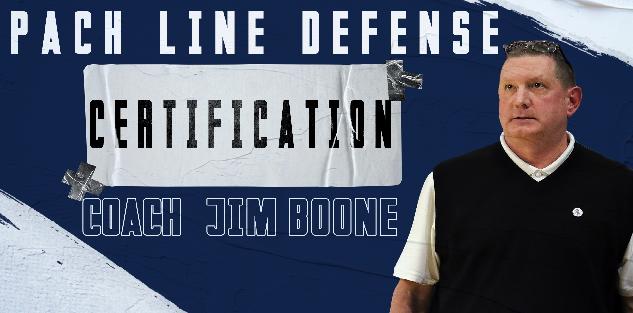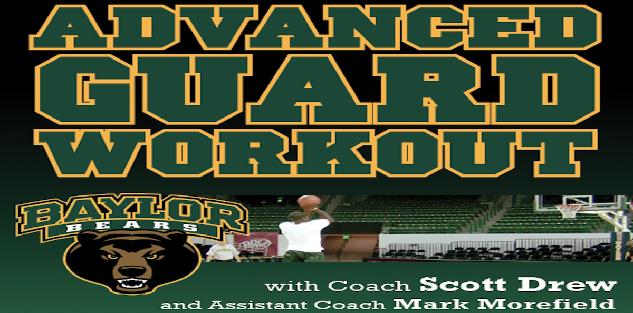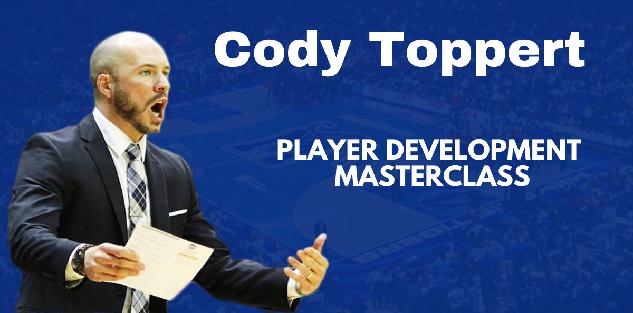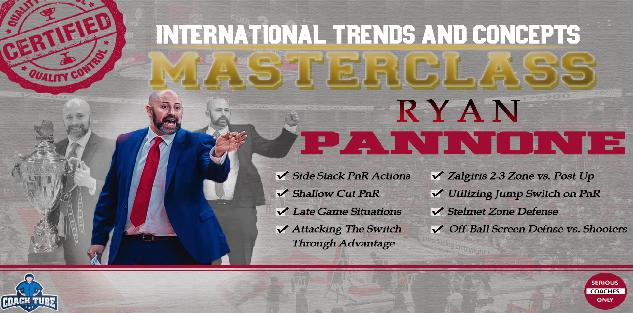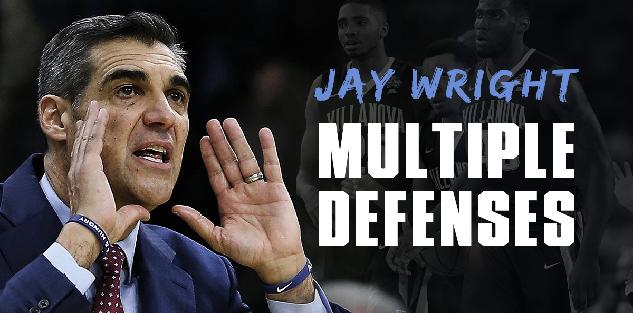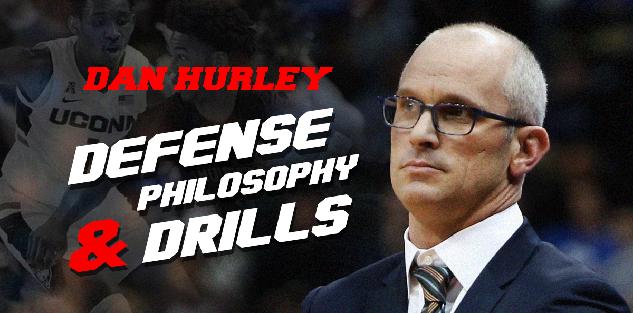Featured courses
- Two Great Game Situational Workouts For the Basketball Offseason by Grant Young
- Two Reads Basketball Players Must Understand Before Executing the Ball-Screen by Grant Young
- Two of LSU Coach Kim Mulkey’s Game-Winning Inbounds Plays by Grant Young
- Three Effective Early-Season Defensive Basketball Drills by Grant Young
- Four Essential Tips For Basketball’s 1-3-1 Zone Defense by Grant Young
- Four Zone Defense Drills to Strengthen Your Team by Grant Young
- How to Beat the Three Most Common Pick and Roll Coverages by Grant Young
- Two Drills to Improve Shooting at the Start of the Basketball Season by Grant Young
- Core Basketball Principles That Dallas Mavericks Coach Sean Sweeney Teaches by Grant Young
- Three Competitive Shooting Drills For Your Basketball Team by Grant Young
- How To Teach The ‘I’ Generation of Basketball Players by Grant Young
- Three Elite Drills to Begin a Basketball Practice With by Grant Young
- How to Build a Championship-Winning Basketball Team Culture by Grant Young
- Two of Texas Women’s Basketball Coach Vic Schaefer’s Tips For Team Culture by Grant Young
- Atlanta Dream WNBA Coach Brandi Poole’s Four Sets for Secondary Offense by Grant Young
- NC State Basketball Coach Brett Nelson’s 4 Crucial Point Guard Qualities by Grant Young
- Kentucky Coach Mark Pope’s Five Guard Rules For Offense by Grant Young
- McNeese State Basketball Coach Will Wade’s 4 Core Pillars by Grant Young
- 4 Tips To Instantly Improve Your Free Throw Shooting by Tyler Linderman
- Assemble a Championship-Caliber Basketball Rotation by Brandon Ogle
- Two of UConn Coach Dan Hurley’s Key Defensive Drills by Grant Young
- Four Post Moves All Basketball Forwards Should Have In Their Bag by Grant Young
- Four of Baylor Coach Nicki Collen’s Midseason Pick and Roll Adjustments by Grant Young
- WNBA Legend Sue Bird’s Two Tips For Attacking on Offense by Grant Young
- Houston Coach Kelvin Sampson’s Three Keys for Building a Basketball Program by Grant Young
- Two of Tom Izzo’s Top Michigan State Defensive Drills by Grant Young
- Four of Olympic Gold Medalist Coach Mechelle Freeman’s Relay Race Strategies by Grant Young
- Three Key Strategies Will Wade Uses to Build a Dominant Team by William Markey
- Five UConn Huskies Men’s Basketball Plays That You Can Use by Grant Young
- Three Tips for Maintaining Team Culture at the End of a Basketball Season by Grant Young
- Three Dribble Drive Motion Drills to Teach Your Basketball Team by Grant Young
- Three Dribbling Drills For Non-Primary Ball Handlers by Grant Young
- Four Advanced Ball Handling Drills For Basketball Guards by Grant Young
- Three Tips to Sharpen Your Post Player’s Footwork in Basketball by Grant Young
- These Three Pick and Roll Drills Are Crucial For Any Ball Screen Offense by Grant Young
- Three Closeout Drills to Improve Basketball Shooting Defense by Grant Young
- Three Tips to Perfect the Packline Defense in Basketball by Grant Young
- Four Keys to Executing the Read and React Offense in Basketball by Grant Young
- Three Tips to Develop Elite Basketball Shooters by Grant Young
- Three Crucial Keys to Executing the 5 Out Offense in Basketball by Grant Young
- These Three Offensive Sets Will Help You Beat Any Zone Defense by Grant Young
- Three Transition Basketball Drills To Play With More Pace by Grant Young
- Three 5 Out Offense Drills Any Basketball Coach Can Use by Grant Young
- Four Vital Techniques for a Motion Offense in Basketball by Grant Young
- Three Baseline Inbounds Plays To Win Your Basketball Team Games by Grant Young
- Four Drills For Sharpening the European Ball Screen Offense by Grant Young
- Three Positioning Tricks For a Basketball Zone Offense by Grant Young
- Three Rules to Perfecting Basketball's Lock Left Defensive System by Grant Young
- UCLA WBB Coach Cori Close’s Two Keys to Winning the Mental Game by Grant Young
- Four of Alabama Coach Nate Oats’ Favorite Basketball Drills by Grant Young
- Three Ways To Turn Transition Offense in Basketball Into Points by Grant Young
- Three Drills to Master Basketball's Pack Line Defense by Grant Young
- Three Transition Defense Drills to Halt Fast Breaks by Grant Young
- Four Offensive Rebounding Drills to Win Second Possessions by Grant Young
- 4 Defensive Technique Drills from Boston Celtics Assistant Coach Brandon Bailey by Marek Hulva
- 5 Drills to Improve Ball Handling by Tyler Linderman
- 13 FUNNY BASKETBALL GIFS by Alex
- BASKETBALL SPEED AND AGILITY: 8 QUESTIONS FOR COACHTUBE EXPERT RICH STONER by Jaycob Ammerman
- Defensive Strategies for Basketball by Ryan Brennan
- 4 Keys To Turning Your Program Into Championship Contender By Dallas Mavericks Coach Sean Sweeney by Marek Hulva
- 5 Components to Creating a Winning Basketball Program by Justin Tran
- Guide to Becoming a Lethal Scorer in Basketball by Justin Tran
- Zone Defense In the NBA Eastern Conference Finals by James Locke
- Mastering Court Mobility: Tips for Effective Movement in Basketball by Justin Tran
- 5 Basketball Shooting Drills: How to Develop a Sharpshooter by James Locke
- 6 Points of Emphasis for a Successful 5 Out Offense by Jaycob Ammerman
- Effective and Efficient Methods to Practice During the Basketball Season by Justin Tran
- Three Great Passing Drills From a Basketball Coaching Legend by Grant Young
- 7 Principles For Perfecting the Princeton Offense in Basketball by Grant Young
- How to Replicate A Modern NBA Offense by Grant Young
- Three Great Two-Ball Dribbling Drills For Basketball Development by Grant Young
- Two Rebounding Drills to Win Your Basketball Team Championships by Grant Young
- How to Improve Your Basketball Team’s Defense With the Shell Drill by Grant Young
- How Baylor Basketball’s Scott Drew Develops Elite Guard Play by Grant Young
- Off-Ball Movement Tips and Strategies: Lessons From the NBA Finals by James Locke
- Player Development: Scott Drew’s Tips for Producing NBA Guards by James Locke
- How to Execute a Spread Offense in Basketball by Grant Young
- Four Quality Quotes From Four Final Four Coaches by Grant Young
- A Guide to the Pack Line Defense by Alex Martinez
- 3 Defensive Build Up Drills to Improve Team Basketball Defense by Grant Young
- Battle of Two Great Coaches: Best Plays from the NBA Finals Contenders by Justin Tran
- 10 Creative Ways Athletic Programs Can Use a Video Board to Raise Money by Coach Williams
- How to Use 3 on 3 to Improve Your Basketball Team by Grant Young
- How to Defend the Pick and Roll by Grant Young
- Mastering Basketball Defense: Techniques, Drills, and Strategies for Success by Justin Tran
- Three Tips From The Coach Who Developed Giannis Antetokoumnpo by Grant Young
- 2023 NBA Draft: Skills and Technique from Top Prospects by Justin Tran
- From College to the Pros: Transitioning the Dribble Drive Offense by Justin Tran
- Positionless Basketball: Redefining Roles on the Court by Justin Tran
- Revolutionize Your Offense: Proven Concepts to Elevate Your Basketball Game by Justin Tran
- 5 Essential Fastbreak Drills Every Basketball Coach Should Know by James Locke
- How to Run a Circle Offense in Basketball by Grant Young
- Game-Changing Strategies: ATO Plays in the EuroLeague and Olympics by Justin Tran
- How to Stand Out at Basketball Tryouts by Grant Young
- How to Improve Your Basketball Team’s Transition Defense by Grant Young
- Indiana Fever GM Lin Dunn’s Two Keys For Women’s Basketball Coaches by Grant Young
- Strength Training Strategies Every Basketball Player Should Have by Grant Young
- A WNBA Basketball Coach’s Four Priorities In Transition Defense by Grant Young
- Three Adjustments to Make When Your Basketball Offense Isn’t Working by Grant Young
- Three Pillars to Applying Defensive Pressure on the Basketball Court by Grant Young
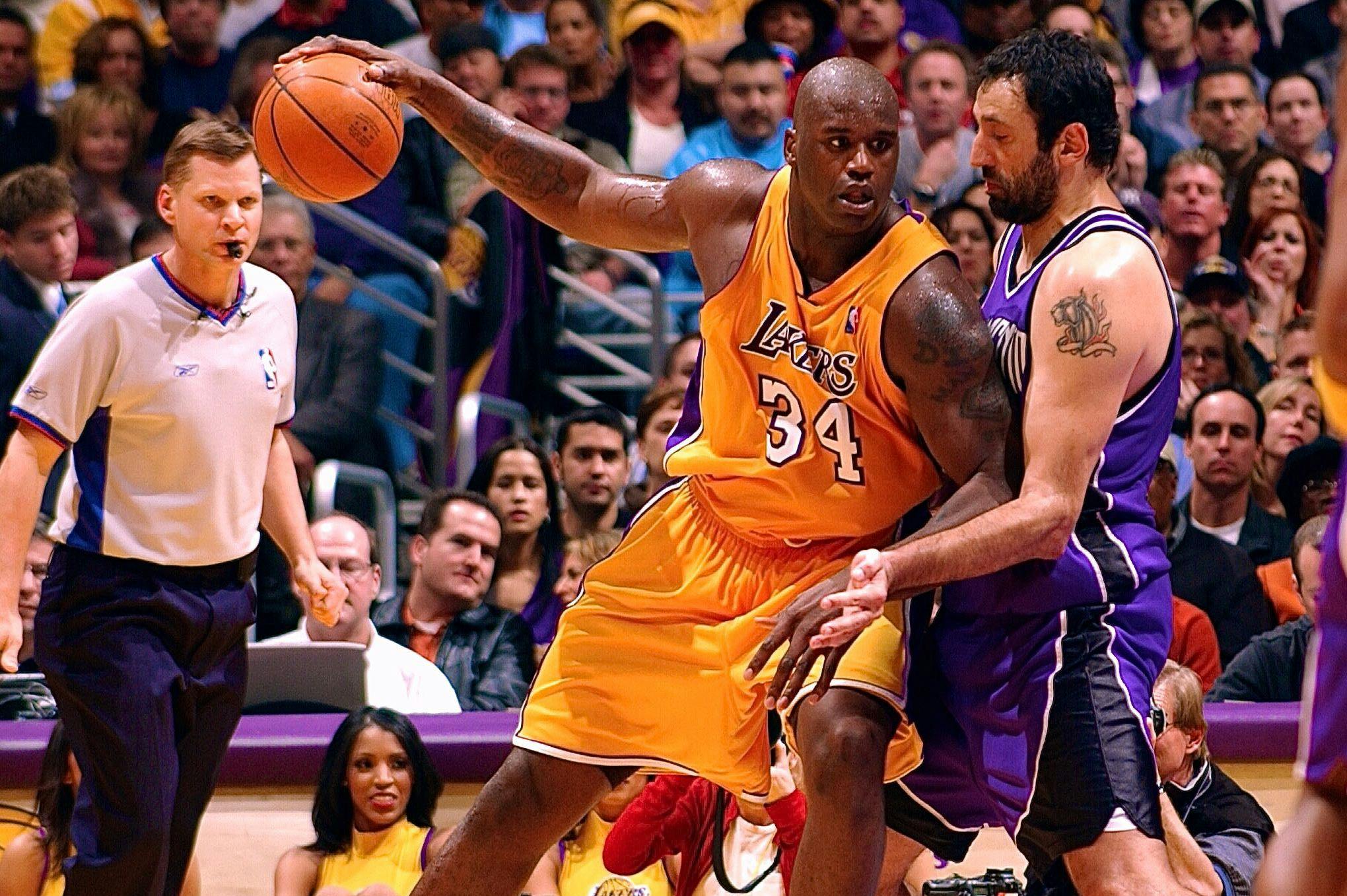
Four Post Moves All Basketball Forwards Should Have In Their Bag
- By Grant Young
The ability to excel with low post moves can significantly influence a player’s impact on the game.
This multifaceted skill set is what makes them more effective, versatile, and dangerous on the court. Good post players often rely on a limited range of moves—such as the straightforward hook shot or the basic drop step.
While these techniques can yield results, they tend to become predictable. Experienced defenders can catch on quickly, effectively anticipating their moves and limiting their scoring opportunities. In contrast, great post players possess an extensive toolkit of moves that keeps defenders perpetually guessing. They can fluidly transition between an array of techniques—like up-and-unders, spin moves, fadeaways, and crafty foot fakes. This unpredictability doesn’t just create scoring opportunities; it forces defenders to react swiftly, often leading to mistakes and fouls.
A diverse post repertoire empowers players to tailor their strategy based on the specific matchup or court positioning. A physically dominant player might lean toward powerful finishes at the rim, while a more agile player could opt for finesse moves that create space for crisp jump shots. This adaptability not only amplifies their scoring ability but also enhances the overall effectiveness of their team’s offense.
By consistently varying their post play, they can exploit mismatches, capitalizing on smaller or less skilled defenders. In essence, the divide between good and great post players lies in their ability to draw from a rich arsenal of post moves. This variety fosters unpredictability, enhances scoring potential, and promotes effective teamwork.
Having a comprehensive skill set of low post moves can transform a player from being merely good into an extraordinary force in the post game.
When it comes to knowing the right post moves to teach young players, few can be trusted more than Luka Bassin.
Luka Bassin is a Slovenian basketball coach who worked at all levels of European basketball. He served as video coordinator, advanced scout, scout, assistant coach, player development coach and head coach in the best Slovenian team Olimpija, as well in youth and senior national teams of Slovenia.
Coach Bassin’s ‘POST UP Encyclopedia (LOW POST strategies)’ details a plethora of post moves that he has seen used to great success in professional basketball. We’ve pulled four of his favorites to include below for your use.
Post Pin (Over The Top)
One of Coach Bassin’s low post moves is called the post pin, which occurs when a defender (ideally a smaller defender who is mismatched down low) tries to “front” the post player (playing in front of them in order to deter a pass).
In this situation, the post player will want to set their front arm against the defender’s back and create as much space between them and the rim as possible. Once they’re able to do so, the guard or whoever has the ball will want to lob the ball in between the post player and the rim.
For this to work, the post player has to use their legs and superior size to create space in the paint while keeping their arm up in the air to indicate that they’re open. Once the pass is received, they need to get their shot up without bringing the ball back downward, as that can allow the defender an opportunity to take the ball away.
Baseline Spin
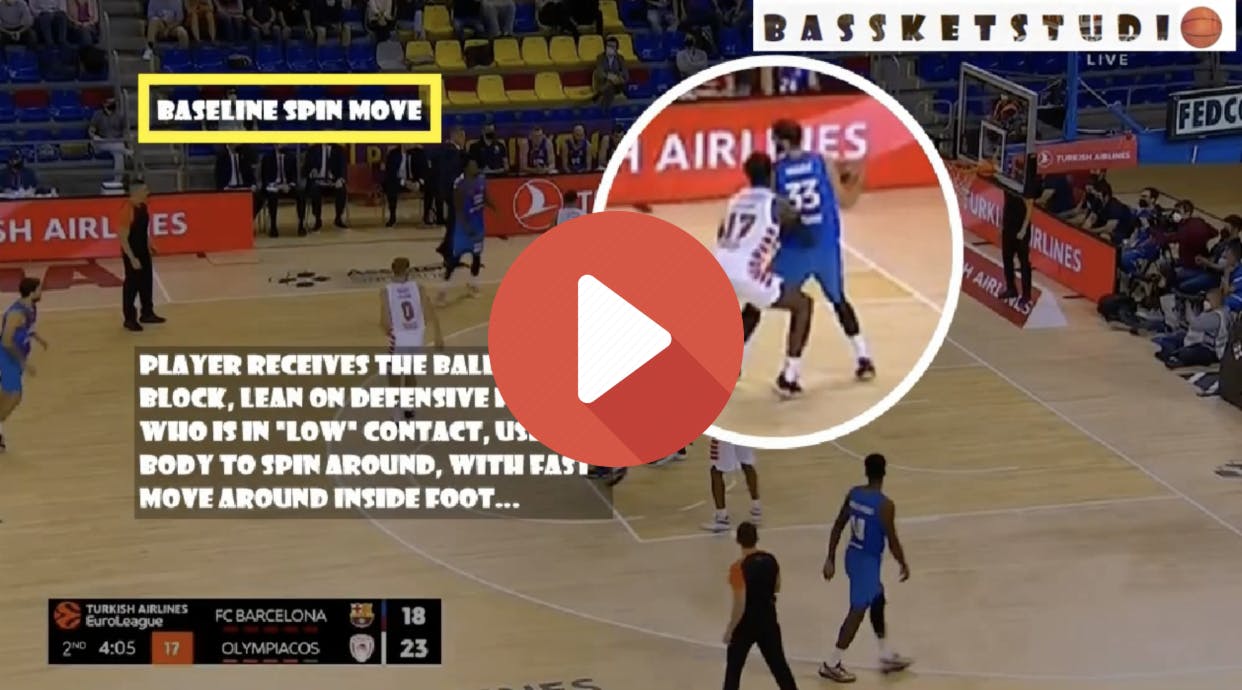
Another one of Coach Bassin’s favorite post moves is the baseline spin, which becomes an option once a post player is slightly out of the paint along the baseline with a defender in proper position behind them.
Once they receive the pass, the post player will want to lean backward against their defender. This is a crucial step for this move’s success because it will inform the post player where their defender is trying to guard them depending on which side they’re positioned.
If the post player is positioned away from the baseline (which is usually the case), this creates an opportunity for the post player to spin around using their inside pivot foot toward the baseline, which will open up a path for them to either drive to the basket or shoot a jump shot from their current position, depending on their skill set.
Step Through
Another important move that a post player can add to their arsenal is what Coach Bassin calls the step-through move.
This move starts when the big receives the ball on either block. From there, they’ll take a moment to gauge when their opponent is trying to contain them defensively. Once that verdict is reached, the player will either drive to the middle or to the baseline (depending on their defender) go up for a shot, pump fake, and then use their pivot foot to alter to a new position before taking their actual shot.
This shift in rhythm will throw the defender off and likely create a wide-open shot close to the basket.
Face Up Drive Middle
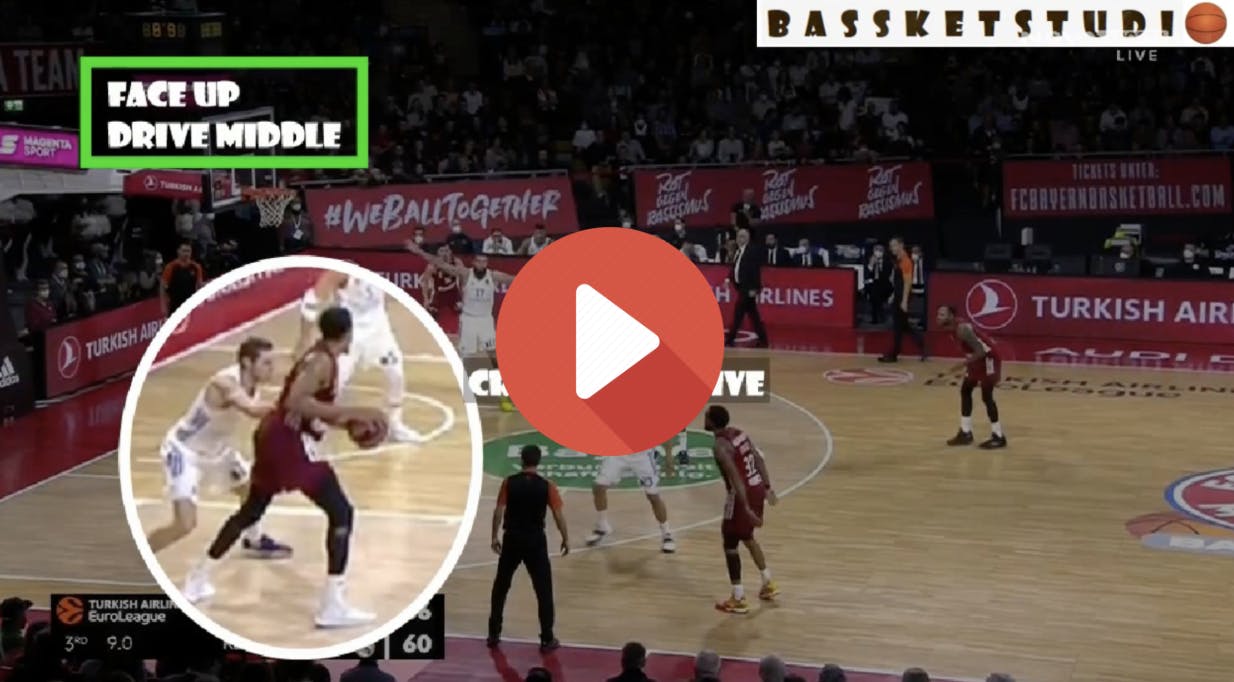
The fourth and final post move from Coach Bassin we’re discussing is what he calls the face up drive middle.
This move is perhaps the most simple. All the post player is going to do is get the pass, face up to their defender, and drive straight through their chest. Since there isn’t much momentum, it’s unlikely that the defender will try to take a charge. But it should knock them off their balance enough to open up space.

